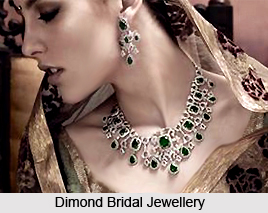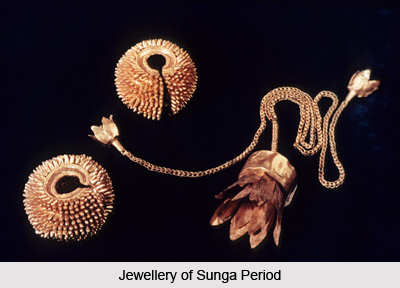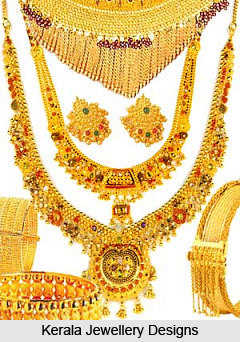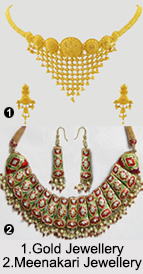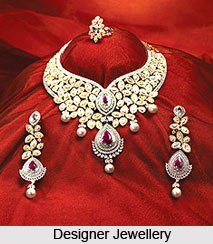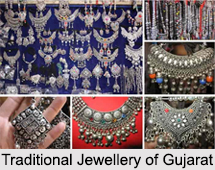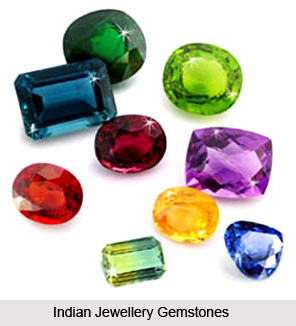 Indian Jewellery has a historical significance as well since traces back the past events of the Indian history. It was around 5,000 years in the ancient past that the art of jewellery making in India was conceptualised. India has been famous for its beads, gems and precious stones from times immemorial. It, thus, attracted the Indian traders and the foreigners alike. For the rulers, jewels were a statement of power, prosperity and prestige. However, progressing through time and history, Indian jewellery had evolved as an art.
Indian Jewellery has a historical significance as well since traces back the past events of the Indian history. It was around 5,000 years in the ancient past that the art of jewellery making in India was conceptualised. India has been famous for its beads, gems and precious stones from times immemorial. It, thus, attracted the Indian traders and the foreigners alike. For the rulers, jewels were a statement of power, prosperity and prestige. However, progressing through time and history, Indian jewellery had evolved as an art.
History of Indian Jewellery
India has witnessed ups and downs of various dynasties. During the Indus Valley civilisation, Indian jewellery portrayed richness and profusion and were worn by both men and women. The workmanship was matchless and the ornaments available were made from gold, silver, copper, ivory, pottery and beads. Ancient Indian Jewellery mirrors the showmanship of the creators during the Gandharva period as well as Sunga period. These ornaments feature strong Greek or Hellenistic influences. With the coming of the Sunga dynasty, the designs of the Indian jewellery changed. A more refined approach witnessed towards jewellery making. Frequent use of gold and precious stones like coral, ruby, sapphire, agate, and crystals were employed. . However, with the Mughal invasions, the whole concept and designs of jewellery changed.
During the reign of Akbar, Indian jewellery was structured with a hybrid of Iranian and Hindu influences. While Jahangir came to the throne, he introduced rather softer designs. Later, Shah Jahan was influenced by the designs of the Dutch jewellery. It is in this period, various jewelleries for arms, neck, turban, leg, hand and face were introduced. In addition to that the Rajputs also were seen to contribute their authority in creating jewellery. Rajasthan was the place for gold jewellery. The anklet of gold worn by men was a proof of nobility as well as of his eminent position at a Durbar. Indian jewellery in modern times saw a drastic change, though certain ornaments have touched the height of popularity and thus emerged as the most used jewellery
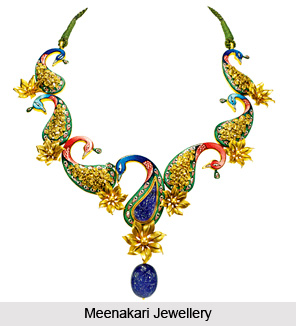 Types of Indian Jewellery
Types of Indian Jewellery
Indian jewelleries are of different types. Jewelleries such as nose rings, earrings, bracelets, crowns, rings, anklets, amulets and necklaces, in any metal and styles are found in India. The range of jewellery in India varies from religious to purely aesthetic types. Jewellery is crafted not only for humans but also for the gods. Different regions of India have unique jewellery making styles. In Orissa and Andhra Pradesh fine filigree work in silver, in Jaipur the delicate art of enamelling or meenakari, the temple jewellery of Nagercoil and, Kundan or the setting of semi-precious or precious stones in gold from Delhi are now famous the world over. The wide variety of silver beads found all over India, especially in Rajasthan, Gujarat, Madhya Pradesh and Himachal Pradesh are also well known.
Indian Jewelleries are made from different materials which include artistic pieces from Kundan, Resin, Glass, rice, plastic as well as shellac and an extensive list concludes. Other major types of Indian Jewelleries include temple jewellery, antique jewellery, minakari jewellery, South Indian jewellery and North Indian jewellery.
Amongst the Indian jewelleries antique Jewellery relates to the present trend and is in reality considered more of fancy jewellery. Antique jewellery is actually the modern day jewellery in gold or silver, which goes through a process of oxidising and is sometimes buried in a pot of clay, to give it a dull look. Minakari Jewellery and Kundan styles of jewellery evolved from the influences of the Mughal dynasty. Minakari refers to enamelling a unique combination of gems, enamel pigments Minakari Jewellery and precious stones and these are usually used in combination to make jewellery pieces that can be worn as chokers and necklaces. The motifs used in this art were flowers, plants, scrolling vines and animal forms, amongst others. At its simplest level, South Indian jewellery imitates forms found in nature. Chased gold is made to imitate the rudraksha bead sacred to the Lord Shiva; elements of necklaces may copy cut grass stalks, lotus buds, garlic bulbs or lentils as well as flowers. The naga ear ornaments are a mixture of formally arranged geometric elements, the squares grouped together at the front of the circular base, and a naturalistic cobra-hood, which develops, bizarrely, into a bat-like creature with fangs. This kind of jewellery is not easily accessible to those outside the culture that produces it. Apart from these few types, a whole range of the modern or contemporary jewellery is also found in India.
Indian jewellery is stylish and is not restricted only to a single metal. Manufacturers use all materials, ranging from plastic and glass to white metal, cheaper alloys and fabric. India has been a major manufacturer and exporter of jewellery in recent years.


